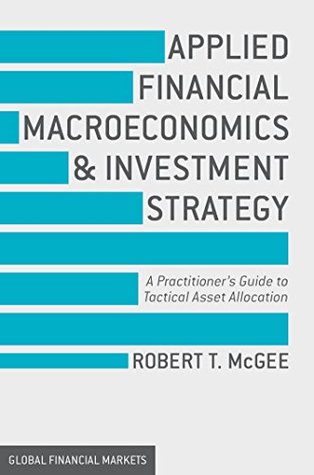Kindle Notes & Highlights
Read between
October 8 - October 22, 2025
In contrast, dividends are not fixed, so they can increase with inflation. As a result, dividend yields require less of an adjustment than bond yields to a higher inflation trend. Each year, the dividend can rise by the inflation rate as can the earnings and price of the stock. If dividends, earnings, and stock prices rise with the inflation rate, the yield can stay the same and the investor is still compensated for inflation losses. The net result in this scenario is a more constant dividend yield compared to bond yields.
The reason deflationary panics tend to be associated with historically low PEs is that they raise both the real risk-free yield because of the zero bound on nominal interest rates and the equity risk premium because of their ballooning impact on credit spreads. A PE of 8 or 9 implies a required real rate of return on equity of more than 10 percent.
The point of this diversion into macroeconomic history is that there is more to the relationship between equity returns, inflation, and relative yields than can be captured in simple year-to-year correlations. There are effects that depend on the momentum, trends, and the higher-order derivatives that are missed in simple correlations but are implicit in expectations about the future that shape returns. For this reason, understanding the broader macro patterns can give more insight into valuation than is typically possible using simple correlations. In fact, most correlations are unstable over
...more
From a long-term perspective, the pre–World War II orthodoxy implied zero inflation over long periods. A dollar in the 1930s had the same purchasing power as a dollar in the 1830s. After World War II, the world began an experiment with fiat money and countercyclical fiscal policy that has been hugely successful when judged by the collapse of GDP volatility shown in Exhibit 5.7. Nevertheless, it took time to learn how to manage this new fiat-based monetary policy and fiscal deficits.
This has significant implications for the labor share of income in the economy. Generally speaking, it means higher profit margins and a lower labor share of income. Second, throughout the developed world, including the United States, the population is aging. There is an unprecedented share of the population living past 65 years of age, when people tend to leave the workforce. When the US social security system was created in the 1930s, most people barely made it to retirement age. The duration of retirement was just a few years on average. Today, it’s not unusual for people to spend 20 years
...more
With lower labor force participation and advancing technology, profits growth has outstripped GDP growth by a wide margin and more than can be accounted for by the typical cyclical pattern.
This rising capital share is necessary because as more people live in retirement, it is the capital income from their savings and investments that pays for their retirement. Automation makes possible replacing people with more capital. As a result, the compensation from this production shifts from workers to capital owners, that is, the bondholders and shareholders in the company.
Millionaires represent less than 1 percent of the world’s population. In 2013, 80 percent of them lived in the United States and Europe. While less than 20 percent of the world’s people live in the wealthy developed economies, they own the majority of the world’s capital. Aging populations in these regions will increasingly depend on returns to this wealth for their retirement income. Younger populations in the developing world, where the other 80 percent of the world’s people live, can raise their living standards more rapidly by working with the capital provided by the rich world.
As discussed in the next chapter, low real interest rates are favorable for stronger tangible asset prices, while high real rates create headwinds associated with commodity bear markets, such as the secular bear from 1980 to 2000, when oil and gold prices fell by 80 percent in real terms through two of the longest business expansions in US history.
Often, the response to macroeconomic trends will cause overshoots that leave the sectors benefiting from a soon-to-end trend extremely overvalued relative to its neglected, disfavored brethren. For example, in the early 1980s, energy, gold, and bonds were priced as if the 1970s inflation trend and double-digit interest rates would last indefinitely. Instead, the next two decades of disinflation reversed the trends in all three asset class values, making energy and gold underperform, while bonds and other beneficiaries of nominal interest-rate declines outperformed.
This set the stage for the relative performance shift that began with the new cyclical bull market in 2002 (a cyclical bull market in a secular bear market that saw the S&P 500 index first top 1500 in 1999 and then languish below that level for most of the next decade). When the market crashed in 2001, investment preferences began a structural shift, as pessimism about stocks became more and more entrenched.
As noted earlier, one reason the value of the US equity market has grown larger relative to GDP is the increasing share of profits that companies are earning abroad (i.e., from economic activity not included in US GDP, Exhibit 5.9). The share of earnings coming from overseas operations varies dramatically across sectors.
The United States’ comparative advantage in science and technology makes it a global leader in technological innovation and the application of new technology to economic activity. In addition, vast US natural resource endowments and state-of-the-art technology allow it also to sell large volumes of materials to the rest of the world. For example, the United States has long been the largest exporter of agricultural products in the world. In addition, this combination has recently also turned it into the largest exporter of refined oil products.


